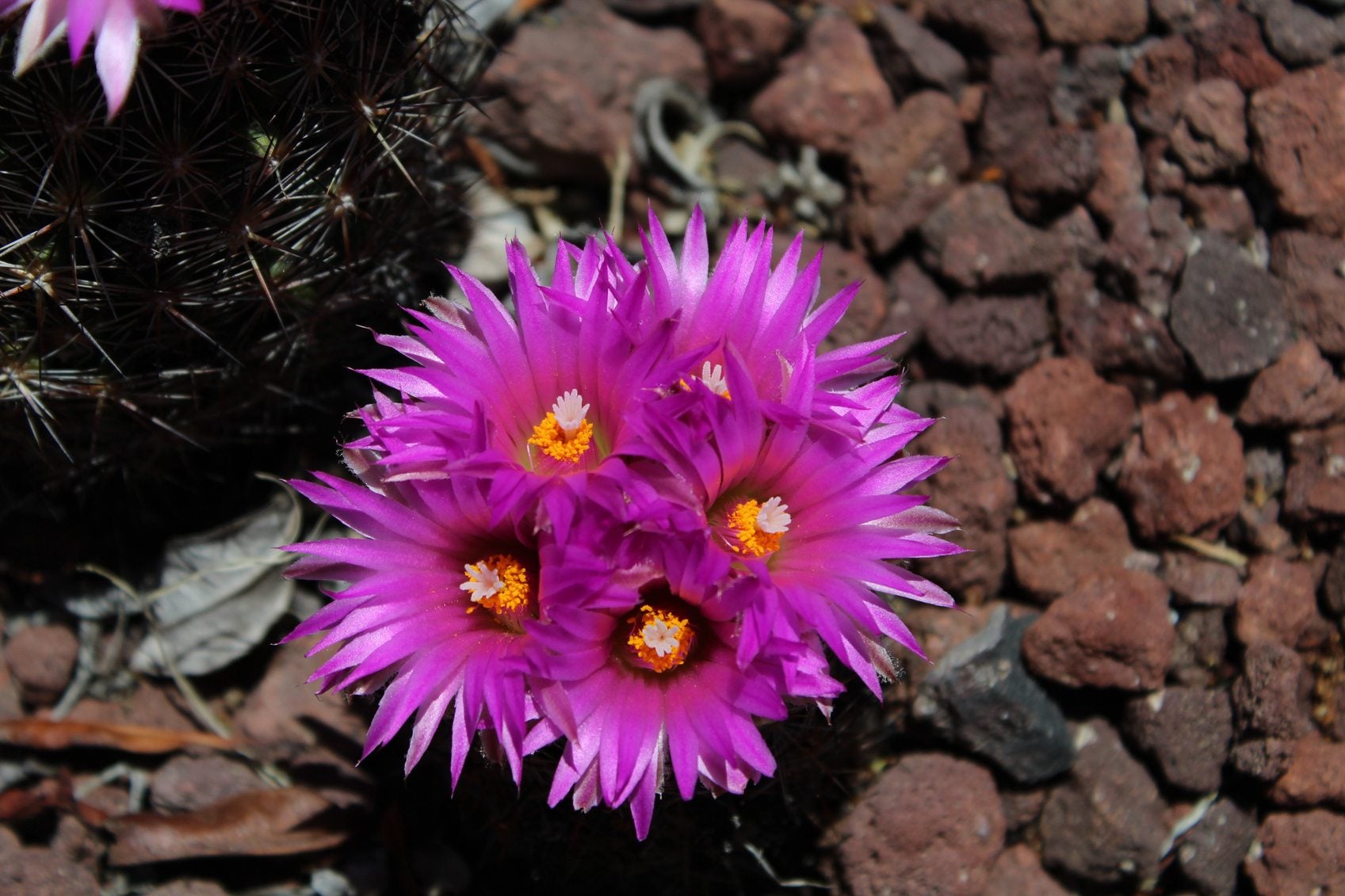Zone 4 Cactus Plants: Types Of Cold Hardy Cactus Plants


Cactus plants are commonly considered desert denizens. They are in the succulent group of plants and are actually found in more regions than just hot, sandy deserts. These amazingly adaptive plants grow wild as far north as British Columbia and are found natively in most of the states of the U.S., including zone 4. Many of the species in the group are quite cold hardy and will survive in temperatures well below freezing. Growing cacti in cold climates are possible if you choose one of these cold resilient varieties and if you provide some protection and shelter for semi-hardy specimens.
Growing Cactus in Cold Climates
It is almost an addiction once you have been bitten by the cactus bug. That being said, most of us collectors are stuck growing plants indoors as cold northern temperatures can kill our prized specimens. Interestingly, there are zone 4 cactus plants that can survive the temperatures in winter, which can exceed -30 degrees F. (-34 C.) in some areas. The key is to choose cacti for zone 4 that are winter hardy and provide them with a microclimate that can somewhat shelter them. Deserts are generally hot, sandy, and dry. This is where we usually think of cacti growing. Even in such areas, though, the nighttime temperatures can cool down significantly, even reaching negative digits in the colder parts of the year. Many wild cacti must be adapted to the hot, dry summer days as well as the cold, often freezing winter nights. There are also things you can do to help too.
- In-ground plants benefit from well-draining soil to prevent root damage when freezes do happen and root rot when soil becomes boggy.
- It may also help to install specimens in containers and move them when temperatures get to a threatening level.
- Additionally, you may need to cover plants during periods of extreme cold to help keep the air around them slightly warmer and prevent ice or snow from damaging the stems, pads, and trunks.
Cold Hardy Cactus Plants
While most of the cold hardy cacti are quite small, their unique forms can create a fun desert garden space even in the northernmost climates, provided they get adequate sun exposure and good gritty soil. The Echinocereus group is one of the hardiest cactus plants. These types of cold hardy cactus plants can withstand temperatures of -20 degrees F. (-28 C.) and even colder if they are in a sheltered, southern area of the garden. Most of these are small, mounded cacti, with numerous spines of various sizes and beautiful, almost tropical blooms. Claret cup cactus is one in particular. Similar to Echinocereus are the Mammillaria group of cacti. These ball-like cactus produce offsets and in mature forms can develop into rolling mounds of tiny cactus. Mammillaria also produce beautiful, vibrant flowers in spring to summer. Most of the plants in either genus rarely achieve more than 6 inches (15 cm.) in height. They are perfect for small rock gardens or at the edges of paths. Just be cautious where you put them due to the numerous tiny spines. Escobaria is another group of cold-tolerant cacti. Lee's dwarf snowball looks just like its name indicates. It produces little puffed mounds with fine white hairs and over time develops into clusters. In addition to these, there are beehive cactus and plain's pincushion. All are extremely tiny, rarely getting more than a few inches (8 cm.) tall but develop large, colorful flowers. Mountain spiny star is in the family Pediocactus and has terrific cold hardiness. These are ball cactus that rarely form colonies but may grow 12 inches (31 cm.) high and 6 inches (15 cm.) wide. They naturally occur in the mountains of the western United States. Compact, cute little cacti are useful for smaller spaces, but if you really want desert impact, the larger, pad forming cacti are your choice. The Opuntia family of cactus can grow 12 inches (31 cm.) high with pads of up to 5 inches (13 cm.) long. They can become spreading plants 4 feet (1 m.) wide with fleshy pads decorated with tiny spines in clusters. Many produce edible fruits, called tunas, and the pads are also edible once spines and skins are removed. Prickly pear is one of the better-known forms of Opuntia and form mats of pads several feet (1 m.) wide. It is a fast-growing cactus that is both drought tolerant and hardy in zone 4. Well-draining soil is crucial to these types of cold hardy cactus plants. Avoid using organic mulches to protect the root zone as these can hold moisture. Cactus plants naturally reduce their water intake in cold weather and cells in pads dehydrate to avoid freezing and bursting in cold temperatures. Use stone chips or gravel as a mulch.
Sign up for the Gardening Know How newsletter today and receive a free copy of our e-book "How to Grow Delicious Tomatoes".

Bonnie Grant is a professional landscaper with a Certification in Urban Gardening. She has been gardening and writing for 15 years. A former professional chef, she has a passion for edible landscaping.